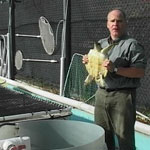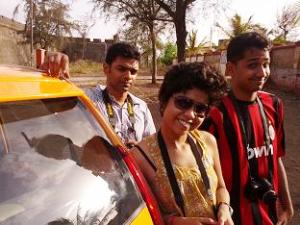Can stories save a hotel? Or to ask specifically, can stories about a hotel that itself seems an anachronism save it from being pulled down? And are old things, even if they come with heritage status, or if imbued with everything traditional, such as the art of storytelling itself, worth 'saving'?
In the beginning of Rajat Chaudhuri's Hotel Calcutta that is threatened by land sharks and mall developers, a monk suggests to the manager Peter Dutta that a 'wall of stories' can help save the hotel. Already most efforts appear to have failed; the municipal corporation, the city's legislators have to all intents and purposes, thrown in their lot with the real estate developers of the Beacon Group. There is also despair for it does seem that an imminent court verdict will go against the hundred year old hotel, and because there is nothing to lose, Peter Dutta takes up the monk's suggestion very dubiously, very half-heartedly. It isn't just the hotel's name that appears to be anachronistic, but that it was built in 1911, the very year the capital was transferred to Delhi. It is owned by the Englishman, Mr Stuart, one of those who 'stayed back' and in its very appearance, as Chaudhuri describes so very evocatively, it is one of those neo-classical buildings, a persistent reminder of a colonial past and so in several ways already doomed by the high rise concrete and glass structures that as this book begins, are now sprouting across Calcutta as they are in other metropolises.
Chaudhuri's Hotel Calcutta begins sometime just before the hotel commemorates a century of existence but it isn't really a happy occasion for the threatened hotel. Peter Dutta, even as he can't keep away the endless sounds of construction as the mall nearby looms up, takes up the monk's suggestion to build a 'wall', one of stories. And so the story telling begins, all told by a host of characters, most with no names and but there's the painter, the professor, the American travel writer, the film producer called Harmond, the stranger with the camera, and the two war historians among all these. All the stories traverse different genres of story-telling yet there are some commonalities and in the very manner of their narration, Chaudhuri tells us something also of the 'art' of the story. Most of the stories evoke an earlier life on the part of their narrators, some things are deliberately withheld, and the characters who feature are those lonely travellers, people in strange, alien lands and this could be a city in the Netherlands or a misty hill town in the south with a museum for insects, or a town in the hills in a hotel where even a spider's music rises over ordinary human conversations. Then there are also those stories set in cities such as Calcutta itself or Delhi, evoking facets and aspects of life always missed - a bookshop in a university lane, or a detective's office in a Calcutta by-lane, or these bring alive a part of a city where time itself seems to have stopped; where a nearly blind seamstress lives on still, imagining buggies plying in the roads below, though these have been long taken over by automobiles of various kinds.
Rajat Chaudhuri is at his best bringing alive the beguiling and menacing allure of such places, and the characters that could belong only here. The lady in the museum; the 'khansamah' lost in his memories of almost a century ago of Annie Besant and the count who never dies; the old-fashioned librarian with his uncanny abilities, the two guests and their hostess in Lianville who find themselves inexplicable adversaries of each other. Among all the characters who flit in and out of the novel, it is Peter Dutta and the painter who appear frequently, as if holding up the book's twin strands, the hotel itself, and the thread of the narration. The painter's once secret work for the government took him often to the Netherlands and it was in Amsterdam that he made the acquaintance of a hotel owner who takes him to the bar called the Deep Blue where a man dressed as a pirate is always engrossed in a game of chess and always playing by his own rules. In a nearby square, statues from Rembrandt's celebrated painting 'The Night Watch' wait stoically, positions unchanged even as seasons change, and they stand guard even as the painter has to escape for his life soon after a game of chess.
As with this first story, there are other 'escape' stories, or attempts to, such as the thief lulled to sleep by the soporific bar conversations, the professor who is 'caught' when sneaking away with the vital Watersmoke from a research institute, an act that could induce conflict between nations. Some of the stories evoke the world of science fiction. The hard-up Detective Kar and his assistant Chaitanya are somehow reminiscent of Satyajit Ray's world but it's also a story that traverses crime and science fiction, a genre Chaudhuri does wonderfully as with the story of Priyabrata Gupta, the scientist playing around with a dolphin gene to make 'Watersmoke'. But then it's not really an easy task to slot these stories in Hotel Calcutta and perhaps its best that these are told in a hotel where travellers come together from afar for a short span of time, and in their stories, always somehow left with some tantalizing parts unexplained, they leave something too, of themselves behind. Who is the pirate chess player chasing the painter out of the Deep Blue that itself vanishes? How can a woman who is Sumit's chat friend turn out to be like the queen bee that alarmed him on a visit to a remote Orissa town? Does Greg really talk to his dead mother and why on earth is a cat called Roger Mortimer, who was the lover of Edward II's queen Isabella and suspected of always murdering him? Every one of these stories could spiral off into a world of its own and Chaudhuri desists from that, because these stories like the hotel belong to their own transient setting. Like all good stories, they leave something of themselves in the mind of the listeners and in our case, the readers.
Peter Dutta listens to these stories, and tells his own. When he isn't there, it is the painter who seems to be worrying about the hotel. Sometimes he wanders aimlessly around, sketching its portions but then he falls asleep before ever completing any. The storytelling keeps on but both Peter and the painter seem to be losing hope. In the midst of all this, a mysterious man from Delhi has meetings with the owner Mr Stuart, and there's more suspense. Perhaps these diverse strands, one that includes real life machinations and wheeling-dealing and the other, which emphasises the unique power of story-telling are necessary in equal measure to save a hotel, Chaudhuri suggests, even as he doesn't go much into the details of the former.
Is the hotel really 'saved'? In the end though it becomes a rhetorical question. Chaudhuri uses the metaphor of the hotel to also speak of the power of a story has, how in its narration, how in the different worlds the imagination can conjure up, an act of storytelling can bring the world alive for the listeners; even a feeling shared for a moment can create empathy, make the world, or even a small hotel in it, worth saving. And just as rightly, most of Chaudhuri's narrators in the book remain nameless. A story needs a narrator, but to thrive it needs more - an entire community of listeners, and listening like reading can evoke a story like nothing else, make it endure. A story is a shared act of creation - Chaudhuri like Italo Calvino, that other master story-teller who traversed the myths and the classics, whose work transgressed narratives, and pulled the reader in, in a manner sure and magical, understands that very well.
Hotel Calcutta
By Rajat Chaudhuri
Niyogi Books, Delhi, 2013
pp 222, price Rs. 350







































